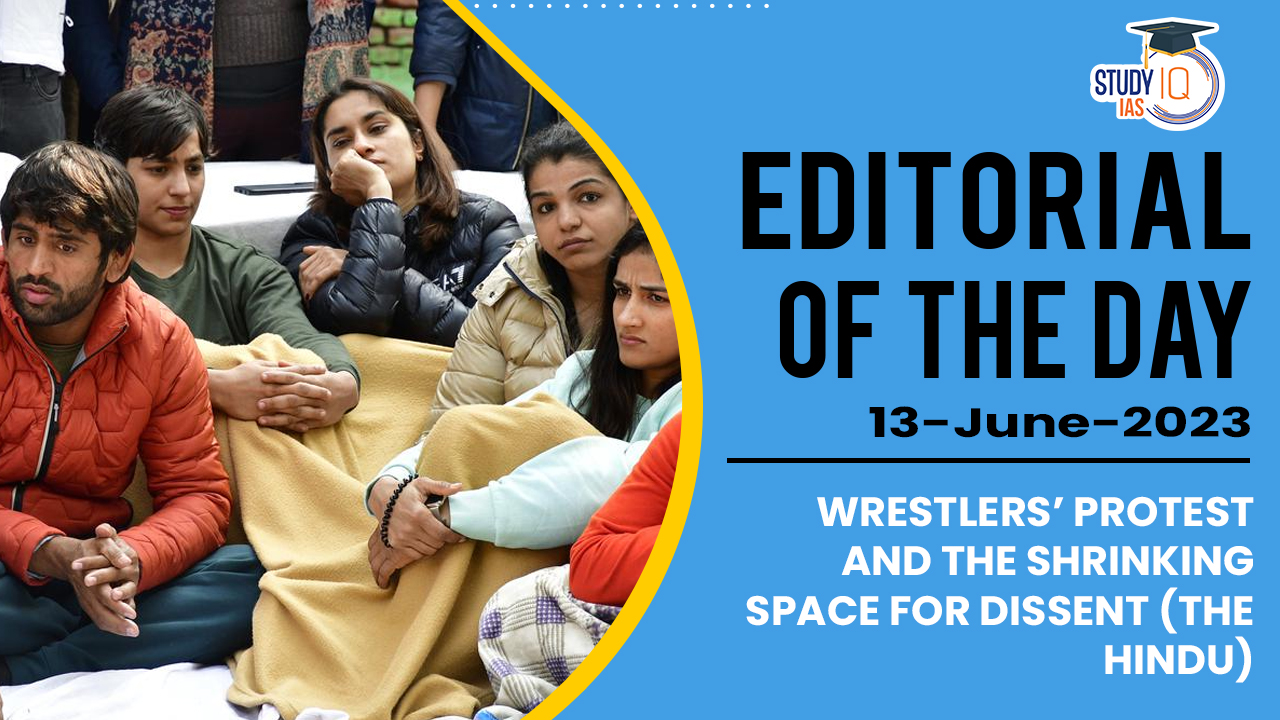Table of Contents
Context: The article is discussing the lack of significant interest and participation in recent agitations in India, particularly among the middle classes and women’s groups. It suggests that this lack of interest should be understood within the broader context of class politics in the country. The article acknowledges that public protests in India have historically played a crucial role in driving social and policy change. They have provided a platform for individuals, classes, and communities to voice their grievances and advocate for their rights. In the past decade, there has been a rapid increase in protests, and they have contributed to a new wave of social activism. The article suggests that the government’s response to these protests has been different from that of previous administrations. Overall, the article is discussing the changing dynamics of protests in India, the involvement of different social groups, and the government’s response to these movements.
Decoding the Editorial
The article is discussing the changing dynamics of protests in India.
- Changing Dynamics of Protests: The dynamics of protests in India have evolved over the years, reflecting changes in society, politics, and the response of the government. Some key observations on how protests have changed:
-
- Increased Visibility: Protests in recent years have gained more visibility and global attention due to advancements in communication technology and social media. The case of the Nirbhaya gang rape in 2012, for example, received widespread coverage and sparked significant public outrage both within India and internationally.
-
-
- Fast forward to May 2023. Medal-winning wrestlers, who have brought honour to the country, have been on the streets for nearly four months to demand the arrest of the Wrestling Federation of India (WFI) chief who they have accused of sexually harassing women wrestlers and a minor.
- But the authorities have not responded for weeks.
- It took the Supreme Court of India’s intervention for Delhi Police to file two first information reports (FIRs).
-
-
- Focus on Specific Issues: Protests have become more issue-centric, with different groups mobilizing around specific causes such as women’s rights, farmers’ rights, labor rights, environmental issues, and social justice. This shift allows for a targeted approach in addressing particular grievances.
- Diverse Participants: Protests now involve a broader range of participants from various sections of society, including workers, farmers, women, students, and youth. Different interest groups and civil society organizations join forces to amplify their voices and increase their impact.
- Government Response: The response of the government to protests has varied. While one regime of government was compelled to address the issue of sexual violence following the Nirbhaya protests, the other has often been criticized for being less receptive to protests and labeling them as “anti-national.” However, there have been instances where the government has been forced to respond to protests due to political pressure or public sentiment.
- Middle-Class Participation: The article highlights a perceived decline in middle-class participation in recent protests compared to earlier movements like the Nirbhaya protests. This shift in participation patterns may be attributed to various factors, including changing priorities, differing perceptions of political parties, and government narratives that influence public opinion.
- Challenges and Repression: Recent protests are described as being more challenging due to the risk of being labelled as “anti-national.” Activists may feel a sense of futility in protesting against a government that they perceive as unresponsive. Moreover, there have been instances of state pressure and repression against protesters, which can deter participation and impact the dynamics of protests.
-
-
- The withdrawal of the controversial farm laws and the back-tracking over the contentious National Register of Citizens (NRC) and the Citizenship (Amendment) Act (CAA) are two recent examples where the government had to back down.
-
- Lack of Participation:
-
- There is lack of significant participation and interest from women’s groups and the middle classes in the current protests, particularly those related to sexual violence and the demands for justice by wrestlers, can be understood within the broader context of class politics in India.
- It is found that historically, women’s groups have organized and taken direct action on the streets to address issues of sexual violence.
- However, in the current protests, apart from Left groups and the All India Democratic Women’s Association (AIDWA), women’s groups have been largely absent, even though the issue at hand is related to gender justice.
- This contrasts with the previous Nirbhaya case, where a broader spectrum of civil society, including men, mobilized and occupied public spaces for weeks.
- Class Politics:
-
- The article also brings attention to the socio-economic background of the protesting wrestlers, who mostly come from modest economic backgrounds.
- Wrestling, being deeply rooted in Indian culture, has not received the same level of attention and support as other sports like cricket.
- The lack of interest and support for their cause is seen in the broader context of class politics, highlighting the disparities and differences in the treatment and response to various social issues.
- The article further discusses the contrasting participation of the middle classes in previous movements like the Anna Hazare Andolan (2011) and the Nirbhaya protests.
- It suggests that the middle class, which has benefited from economic liberalization and neo-liberal policies, played a crucial role in discrediting the previous government and supporting the current government. This ideological consistency, combining support for neo-liberalism, influences their political loyalties and shapes their response to issues like sexual violence.
- Therefore, the article emphasizes that the lack of support from women’s groups and the middle classes in the current protests can be understood within the broader dynamics of class politics, reflecting differing priorities, ideologies, and historical contexts.
- Middle Class Activism:
-
- The article suggests that the support extended by khap panchayats (local caste-based councils) to the wrestlers reflects the wrestlers’ social identity, but it also indicates that greater support from civil society could have transcended identity issues.
- It emphasizes that the issues at hand are not just about caste politics but also majoritarian politics, which can shape public perception and acceptance of the government’s narrative.
- The article further critiques middle-class activism, stating that it often prioritizes issues that directly affect them, potentially overlooking the struggles of marginalized and disadvantaged communities.
- This self-focus can perpetuate inequalities and hinder efforts to address broader social issues. It suggests that a narrow understanding of social reality, without considering intersections of class, caste, gender, and other factors, can contribute to a limited perspective and marginalize certain voices.
- Furthermore, it is argued that this tendency towards self-focus and a lack of intersectional analysis leads to unprecedented silence and inaction among both the middle classes and oppressed classes. Consequently, there is insufficient public pressure exerted on the government to hold accountable individuals involved in acts like sexual harassment.
- In summary, the article points out the influence of majoritarian politics, critiques middle-class activism for its narrow focus, and highlights the normalization of patriarchy and sexual harassment in society.
Way Forward
- There is a need for a more inclusive and intersectional approach to social issues, as well as increased public pressure on the government to address these issues effectively.


 UPPSC Recruitment 2026 Notification Out ...
UPPSC Recruitment 2026 Notification Out ...
 StudyIQ IAS Mega Walk-In Drive 2025: Hir...
StudyIQ IAS Mega Walk-In Drive 2025: Hir...
 UPSC EPFO Result 2025 Out: EO/AO and APF...
UPSC EPFO Result 2025 Out: EO/AO and APF...

























